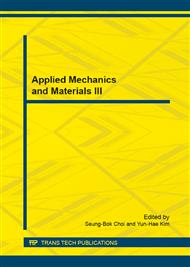p.215
p.224
p.229
p.234
p.240
p.246
p.252
p.259
p.266
FE Simulation of Torque and Drag inside Borehole of Oil and Gas Wells (Part II)
Abstract:
The wellbore friction, torque and drag, between drill string and the wellbore wall is the most important issue which limits the drilling industry to go beyond a certain measured depth.The calculation and analysis of torque and drag were considered to be very important in drilling and well design. A variety of models (soft, stiffness, mixed and finite element) have been used to determine the torque and drag. A FEA (Finite Element Analysis) model of the drill string to simulate it’s working behavior, involving contacts between the drillstring and borehole wall was developed, this FE Model was to be compared with computational model of torque and drag, and to be verified with experimental results.The drillstring displacements calculated by the FEA model matches those from commercial software in petroleum industry (Landmark). The model developed and discussed in this paper can be used for predicting torque and drag inside wellbores of oil and gas wells, and it will also benefit in preplanning simulation of oil and gas well drilling operations.
Info:
Periodical:
Pages:
240-245
Citation:
Online since:
January 2015
Authors:
Price:
Сopyright:
© 2015 Trans Tech Publications Ltd. All Rights Reserved
Share:
Citation:


